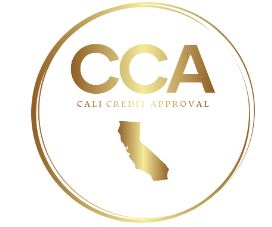Your cart is currently empty!
The “Road to the Sale” is a proven sales strategy that guides potential customers through their car-buying journey. Whether you’re new to the automotive sales industry or a seasoned pro, applying this structured approach can help you build stronger customer relationships, address concerns effectively, and ultimately close more sales. Here’s how to apply the “Road to the Sale” technique with your customers:
1. Greeting & Building Rapport
Objective: Set the stage for a positive interaction.
Start with a warm and friendly greeting to make customers feel at ease. Personal connections are key to building trust early in the process.
Best Practices:
- Introduce yourself by name.
- Ask open-ended questions like, “What brings you in today?” or “What kind of vehicle are you looking for?”
- Build rapport by finding common ground. Maybe they mention a recent trip, family needs, or a specific car feature they prefer. Use these insights to guide the conversation.
2. Needs Assessment (Qualifying the Customer)
Objective: Understand their needs and budget to recommend the best options.
Effective needs assessment is about asking the right questions to uncover what the customer truly wants.
Key Questions to Ask:
- “What type of vehicle are you interested in?”
- “What’s your budget?”
- “Are you considering trading in your vehicle?”
- “Will you be financing or paying cash?”
By actively listening and taking notes, you ensure you’re only showing vehicles that fit their criteria, saving time for both you and the customer.
3. Vehicle Selection
Objective: Recommend vehicles that align with their needs.
Once you’ve understood the customer’s needs, it’s time to suggest one or two options that best match their criteria.
Tip: Emphasize the features that are important to them, such as fuel economy, cargo space, or towing capacity. Tailoring your recommendations based on lifestyle preferences makes the experience more personal.
4. Walkaround Presentation
Objective: Showcase the vehicle’s features and benefits.
Present the vehicle with enthusiasm. Explain how the features relate to their specific needs.
Use the “Feature → Advantage → Benefit” method:
- Feature: “This SUV has all-wheel drive.”
- Advantage: “It provides extra traction on wet or icy roads.”
- Benefit: “This means you’ll have better safety and peace of mind, especially during winter months.”
5. Test Drive
Objective: Let the customer experience the car first-hand.
Encourage the customer to take the car for a test drive, which is often the final step before they decide to buy.
During the test drive:
- Ask how the car feels: “How does it drive?”
- Gauge their reaction: “Is this the type of ride you’re looking for?”
6. Presenting the Numbers (First Pencil)
Objective: Provide clear and transparent pricing.
When the customer shows interest, present the numbers in a structured way. Break down the price, taxes, fees, trade-in value, and financing options.
Tip: Offer them a choice, like:
- “Would you prefer a lower monthly payment or a shorter loan term?”
7. Overcoming Objections
Objective: Address any concerns they have and move the deal forward.
It’s natural for customers to have hesitations. Whether it’s the price, the vehicle, or financing, uncover their concerns to better address them.
Respond Confidently:
- If they hesitate on price, say, “If I can work with my manager to get closer to your budget, would you be ready to move forward today?”
8. Closing the Sale
Objective: Ask for the sale in a friendly, yet confident manner.
At this stage, you should be prepared to close the deal.
Closing Phrases:
- “Are you ready to take this car home today?”
- Create a sense of urgency: “This model is in high demand, and we have limited stock.”
9. Delivery & Follow-Up
Objective: Ensure a smooth delivery process and build long-term customer relationships.
Once the sale is made, walk the customer through the paperwork efficiently and make sure the vehicle is clean and ready for delivery.
Post-Sale Follow-Up:
- Call or text them after the sale to ensure they’re satisfied with their new vehicle and offer assistance if needed. This can help build trust for future referrals or repeat business.
Key Takeaways
Mastering the “Road to the Sale” technique requires more than just following a set process—it’s about actively listening, adapting to each customer’s needs, and providing a personalized experience. Whether you’re new to the field or a seasoned sales pro, consistently applying these steps can significantly increase your chances of closing deals and turning first-time customers into repeat buyers.
Disclaimer:
This post is intended for educational purposes only. The techniques outlined above are based on industry standards and may vary depending on individual dealership practices, market trends, and customer preferences. Results may vary based on experience and the approach taken by individual sales professionals.


Leave a Reply